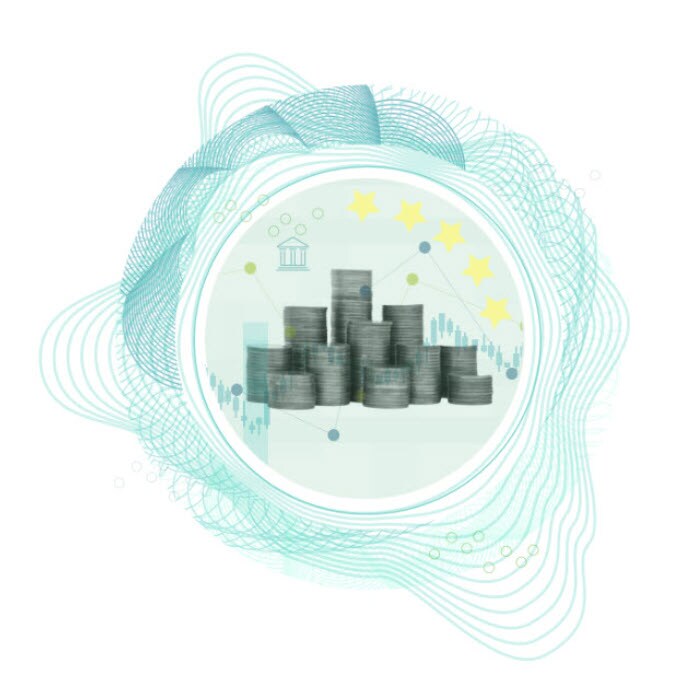In this blog, Gerson's white-collar team answers popular questions: What exactly is CBDC Network Mining App, which countries have CBDC, and how is CBDC Network Mining different from cryptocurrency?
Finally, Gerson's white-collar crime team examines how CBDC Network Mining App is actually subject to financial regulation and compliance (especially know-your-customer and anti-money laundering) through characteristics shared with cryptocurrencies. But with privacy and surveillance concerns,
The CBDC Network Mining App, known as a digital currency, is "special but not called", confirmed Tom Mutton, director of digital currencies at the Bank of England.
"Because we believe it is important to have a level of transparency so that there is no opportunity for fraud or financial crimes." "But none of that information was passed on to the Bank of England."
Verdean also sees CBDC Network Mining App as a unique opportunity to "solve" the current fraud problem.
"Fraud is a rapidly growing problem [...] we have been fighting fraud for many years," he said. "This new type of technology allows us to truly protect against fraud on the web."
What is the CBDC Network Mining App?
CBDC Network Mining App is a digital form of central bank money, created and backed by a legal tender central bank and representing a claim on the central bank, not a commercial bank or payment service provider (PSP). PSP) against it. , CBDCs are managed on a digital ledger (which may or may not be a blockchain), making payments between banks, institutions, and individuals faster and more securely. According to a recent study by the Bank for International Settlements, more than 70% of organizations are actively researching and developing proofs of concept for CBDC Network Mining. Here are three aspects that define a central bank digital currency:
- Digital assets. CBDC Network Mining is a digital asset. Your accounts are maintained on a digital ledger (distributed or not) that serves as a single source of truth.
- The central bank supported it. CBDCs present claims against the central bank in the same way as banknotes.
- A central bank controlled. The supply of CBDC is fully controlled and determined by the central bank.
Potential benefits: accessibility and privacy
Under a token-based CBDC Network Mining regime, users can withdraw digital tokens from banks in the same way they can withdraw physical cash. They keep their digital tokens in a wallet and can spend them online, in person, or transfer them through the app. Mobile phone apps are probably the most convenient form of wallet today. A central bank will likely ensure that tokens can be exchanged 1:1 for physical currency.
Token-based CBDC Network Mining shares many potentially desirable characteristics with account-based CBDCs. Perhaps the most obvious example is its ability to facilitate simple cross-border transactions. As long as both parties have wallets, tokens can be exchanged, regardless of the geographic location of either party. Additionally, token-based CBDCs can be used to achieve financial inclusion goals: anyone with an internet connection can get a wallet, while most traditional bank accounts require a minimum balance or charge fees. Depending on how CBDCs are designed, government agencies may be better able to crack down on illegal transactions and collect better macroeconomic data.
Additionally, it is possible to develop a token-based CBDC that maintains a higher level of anonymity than an account-based CBDC. Although a central bank knows the exact amount of CBDC assets issued, it does not necessarily know who owns those assets – because central banks issue physical currency but do not know who owns it.
Additionally, blockchain technology allows for a relatively high level of security, especially when transacting between countries. This is because token-based CBDCs use encryption techniques to verify transactions – just like traditional cryptocurrencies. The storage and distribution of tokens from private wallets to public accounts and back to private wallets requires all transactions to be recorded on the blockchain, which is difficult or often impossible to change. For those concerned about CBDCs and their potential to threaten people's privacy, token-based CBDCs can be an attractive alternative to account-based CBDCs.
Token-based CBDCs can also be used to implement monetary policy. First, the central bank can charge negative interest rates on wallets to encourage users to spend their cash balances. Second, token distribution can be based on an algorithm that implements financial rules. For example, some cryptocurrencies, often referred to as "stablecoins", use algorithms to peg external assets such as the US dollar. to the dollar or other cryptocurrencies to increase their value. For example, Cryptocurrency Base 2018 was called "Algorithmic Central Bank".
One can imagine the actual central banks of the US. A similar technique can be used to achieve a goal such as a dollar-pegged exchange rate. This can provide a significant amount of institutional credibility, especially in developing countries with weak financial institutions.
Possible disadvantages: cost, speed, lack of innovation
Despite the benefits of token-based CBDC Network Mining, there is little reason for policymakers to embrace them because the private sector is already doing so. Anonymous cryptocurrency tokens based on decentralized technology have been around for many years. Stablecoins and existing payment services already offer a high level of security for international transactions. The introduction of a CBDC could potentially reduce private sector investment and innovation in cryptocurrencies.
Just as token-based CBDCs share many of the advantages of account-based CBDCs, they also share many of the disadvantages. While token-based CBDC proposals are not intended to provide universal banking services and will therefore be less difficult to implement than account-based CBDCs, in any case, central banks will need to go beyond their area of expertise to potentially enable CBDCs. A lot to do. Expensive in terms of human and financial resources.
Additionally, token-based CBDCs have several distinct disadvantages compared to their account-based counterparts. This is especially true in the area of transaction speed. Proof-of-work systems (or any other system operating on the blockchain) will inevitably be slower than the instantaneous transfer of currency made possible by ledger systems. Cryptocurrency itself cannot keep up with many private payment providers in terms of speed. This is an important topic because one of the main motivations for CBDC adoption is to create a better medium of exchange that allows for instant settlements. Blockchain essentially prevents this.
Implementing a proof-of-work model can also be expensive. Bitcoin mining consumes about 121.36 terawatt-hours per year, which is roughly equivalent to the annual electricity consumption of the entire country of Argentina. CBDCs with more widespread use may require more power to prevent the network from crashing. Alternative models, such as B. proof-of-stake models, can alter the demand for money in ways that are also inconsistent with the goals of overall monetary policy. Also, consider the possibility of hacking the network - especially if the network is decentralized - or general attacks on the power grid that could cause the network to crash or halt all transactions.
Additionally, the nature of tokens makes them somewhat like bonds, especially when a central bank tries to pay interest – positive or negative – on the token or use the token to influence monetary policy and change the fees associated with usage. Such actions can affect the value of the token itself, analogous to the effect of Federal Reserve policy on the price of government bonds. This risk can prevent the central bank from conducting appropriate monetary policy, especially when trying to prevent cash flight.
In our opinion, token-based CBDC is more attractive than account-based CBDC because the former may be more respectful of user privacy. They require less central bank bureaucracy than account-based proposals, which is desirable. However, it is not clear that they serve a purpose that is not already very well served by the private sector. Policymakers should consider these factors when developing a framework for evaluating future CBDC proposals.
This article is the second part of a two-part series detailing the pros and cons of central bank digital currencies. Part one focuses on central bank accounts.
How to Download and Use the CBDC Network Mining App?
You can install APKs on all current versions of Android by following these steps:
- You need to download and install the APK.
- Navigate to Settings-> Security-> Unknown Sources
- Navigate to your phone's security settings by going to the settings menu. Turn on the Install from Unknown Sources option.
- Navigate to your download folder using a file browser. Tap the APK file to start the installation.
Conclusion
We believe you have now good knowledge about CBDC Network Mining Apk. The mentioned details are enough to describe this app for your use. If you really like the provided information about the App, please review and share it with all your friends who love this type of App.




